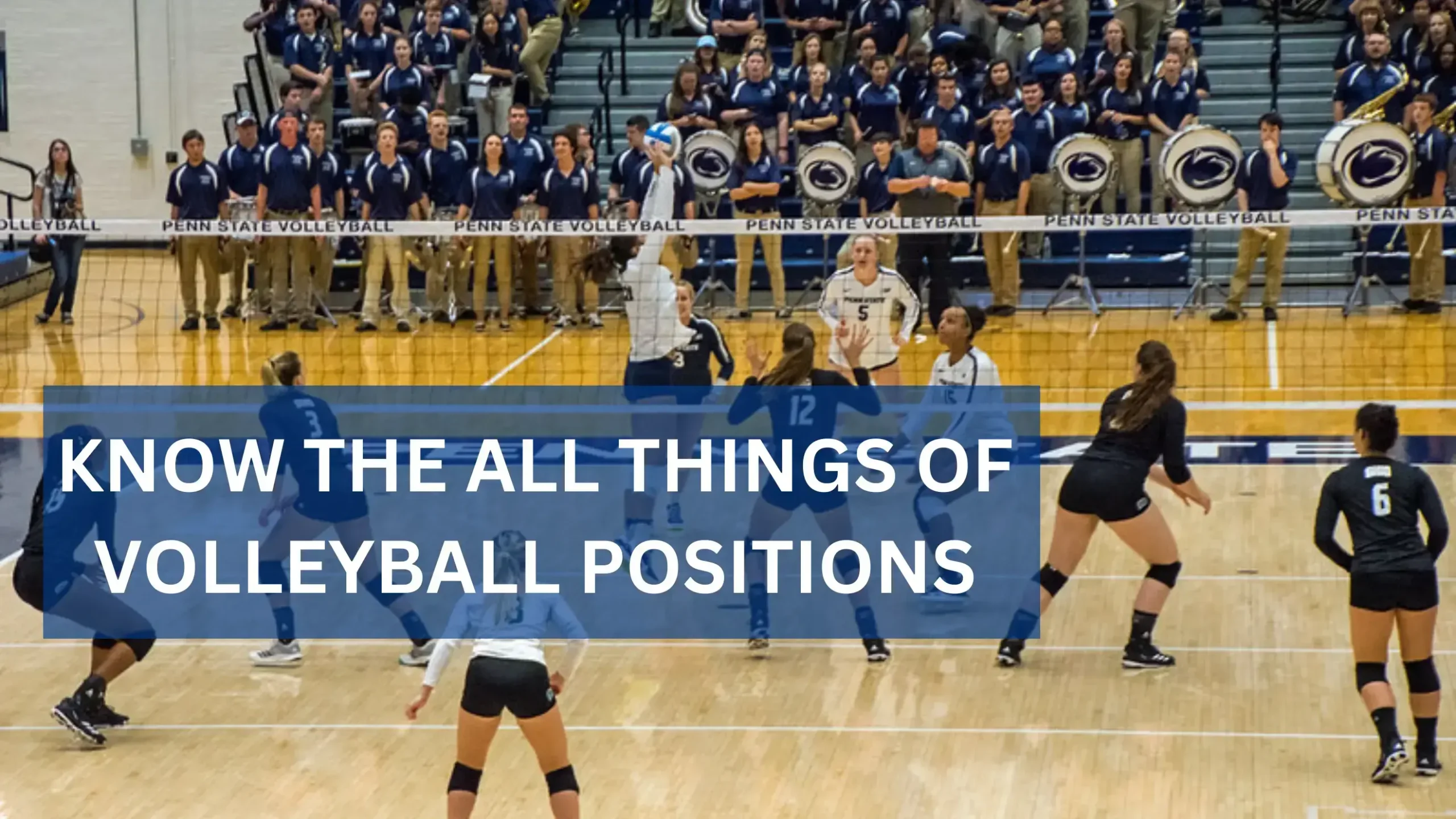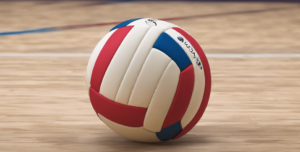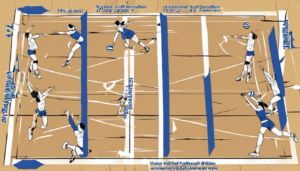Hello biginner, Are you struggling to understand volleyball positions and not enjoying the game because of it? Don’t worry I am here for you to understand the all elements and how you will improve. if you are a volleyball fan, volleyball enthusiast, and so on.
As a volleyball lover, you can only enjoy the game if you understand the position. With over a decade of experience in the volleyball field, I’ve crafted this ultimate guide just for you.
There are 6 (six) main positions in volleyball but many team plays with seven (7) positions. By reading this post, you’ll master each position in volleyball properly, gain insights from experts, and transform your game experience.
Let’s dive in to discover the secrets to understanding and excelling at each role on the court!
Before diving please take a coffee and enjoy this article.
Table of Contents
What Are Volleyball Positions?
Volleyball positions are the specific areas and significant roles that players take on the court to create a winning strategy and maintain teamwork. Each position—whether it’s the setter creating opportunities, the libero specializing in defense, or the hitter dominating at the net—has a unique responsibility that contributes to the team’s success.
These positions and their roles are designed to maximize efficiency, ensuring every player performs where they excel. By understanding the various volleyball player positions, you’ll unlock the key to better coordination and elevate your gameplay.
Curious about how these positions work together? Let’s explore!
Why Knowing Volleyball Positions Matters
Understanding player and volleyball positions is key to enjoying and excelling at the game. The game of Volleyball is a team sport where each proper position has a unique role.
For example, the setter is responsible as a playmaker who set the ball and setting up attacks for hitters, while the libero is a defensive specialist who saves the ball from hitting the ground. Each position works together to create a smooth and effective game. Stay with me you will understand all things.
I have a decade of experience in volleyball, I know that understanding of the game roles can help you appreciate the game more and improve your skills on the court. It helps you communicate better with your teammates, anticipate plays, and make smarter decisions during matches.
By knowing all about volleyball positions, you’ll not only enjoy watching games more you also feel more confident playing and ready to move. This knowledge turns confusion into clarity and makes the game more exciting and rewarding.
Basic Layout of Volleyball Positions
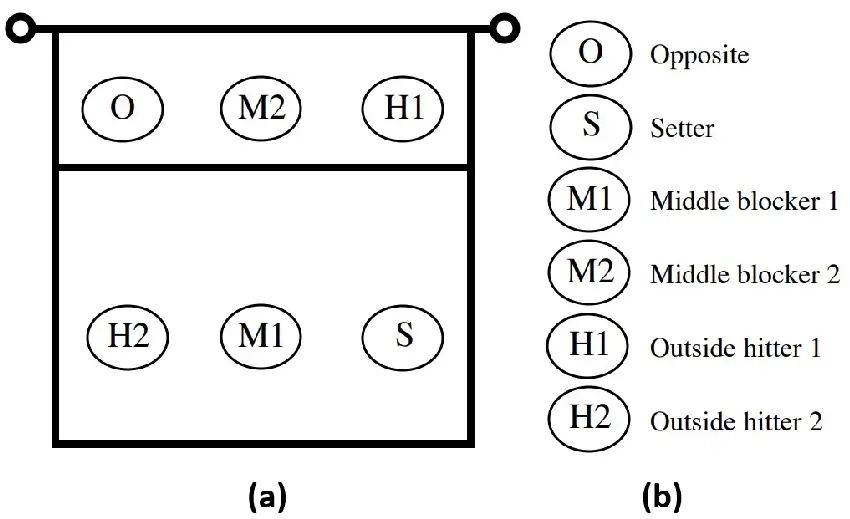
Let’s get the positions explained in volleyball so you can elevate your game! Knowing the layout of the court and how each role fits in isn’t just helpful—it’s crucial.
Imagine confidently understanding where every player belongs and what they do. With this knowledge, the game feels less like a whirlwind and more like a strategy you can master.
The volleyball court is divided into six zones (or seven in certain situations where rotations come into play). Each spot on the court corresponds to a role: Setter,
Outside Hitter, Opposite Hitter, Middle Blocker, Libero, Defensive Specialist, and Serving Specialist. These positions are essential for maintaining a smooth team’s offense and defense.
When I started out, I realized that grasping the court’s layout was the first step to improvement. Once I had that down, I could focus on timing, communication, and strategy—it’s like learning the alphabet before you write sentences.
If you focus on mastering this, you’ll level up quickly.
Here’s a quick overview of the positions explained:
- Setter: Positioned near the middle, the setter is the strategist who delivers the ball perfectly to hitters, setting the tempo for the match.
- Outside Hitter: Starting on the positions are outside the left side, this player takes the lead as the primary attacker while also helping in defense.
- Opposite Hitter: Positioned on the right front, they act as a balanced player who can hit the ball powerfully or block critical plays.
- Middle Blocker: Found at the center net, they’re responsible for blocking opponent attacks and making quick offensive plays.
- Libero: This defensive specialist stands out because they wear a different colored jersey. What sets the libero apart is their role in receiving serves, digging spikes, and assisting hitters with precise passes.
- Defensive Specialist: Working closely with liberos and defensive specialists, they specialize in pass the ball effectively to keep plays alive and prevent points.
- Serving Specialist: The serving specialist’s job is to deliver strategic and powerful serves, aiming to disrupt the opponent’s formation and score quick points.
In certain situations, understanding how these positions adapt and rotate can help you predict plays and coordinate with others more effectively.
Mastering this layout isn’t just about knowing where to stand—it’s about seeing how every role contributes to a winning strategy.
So, whether you’re a libero rocking your different colored jersey, a middle blocker denying spikes at the net, or a serving specialist with a killer serve, you’re part of something bigger.
Dive deeper into the next sections to learn how each position works together and brings the game to life.
Mastering These Key Six Volleyball Positions With Extra One
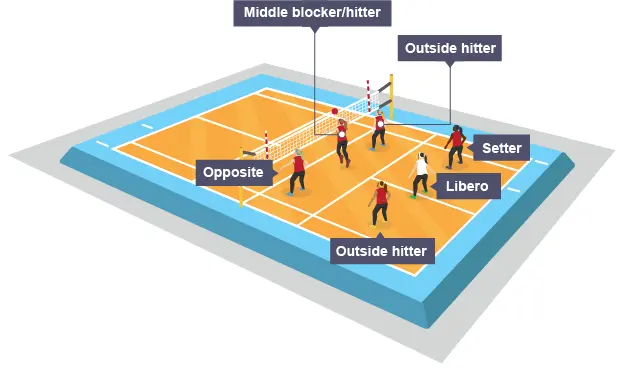
If you’ve ever looked at a volleyball match and thought, “How do these players know where to go and what to do?” you’re not alone.
Volleyball positions can seem complicated at first, but once you get the hang of them, they make perfect sense—and you’ll start to appreciate how every role fits into the bigger picture.
Let’s dive into each position and figure out what makes them tick.
Setter: The Ultimate Playmaker
The setter is the engine that keeps the volleyball match running smoothly. Their main responsibility? To set up their hitters for success and keep the offense moving.
A setter’s job is all about precision—imagine having to get the second ball in just the right spot every single time. Not to mention, they need to make split-second decisions while controlling the pace of the game.
What makes a great setter? Quick reflexes, communication skills, and the ability to read the opposing team like a book.
If you want to try being a setter, start by mastering your hand placement, practicing consistent sets, and working on footwork so you can get into position quickly.
Setter Pro Tips:
- Focus on clean hand positioning for accurate sets.
- Practice quick footwork so you’re always ready to assist.
- Communicate with your hitters—every offensive player needs to know the plan.
Outside Hitter: The Court’s Superstar
The outside hitter, also known as the left-side hitter, is usually the crowd favorite. Why? Because they’re often the ones delivering those jaw-dropping spikes that everyone loves to see. But it’s not just about attacking.
Outside hitters have a lot on their plate—they spike, block, dig, and play defense. They also handle serve receive duties, making them one of the most versatile positions on the court.
Being on the side of the net means they must balance both offense and defense while staying adaptable. If you want to take on this role, focus on improving your vertical jump (you’ve got to jump high to hit over the blockers) and make sure your digging and passing skills are on point.
Outside Hitter Pro Tips:
- Practice hitting from various angles to stay unpredictable.
- Work on your vertical jump to improve both spiking and blocking.
- Stay focused on your defensive skills—digging is just as important as attacking.
Opposite Hitter: The Quiet Powerhouse
If the outside hitter is the showstopper, the opposite hitter is the behind-the-scenes hero. Positioned on the right side, they provide a balance of offense and defense.
Opposite hitters not only deliver powerful spikes but also play defense against the opposing team’s hits, especially from the outside hitter on the other side.
In addition to attacking, opposite hitters often assist in blocking and might need to fill in for the setter in a pinch.
Their versatility makes them a crucial part of any lineup. If this sounds like your jam, work on spiking from the right, perfecting your blocks, and being ready to adapt to different situations.
Opposite Hitter Pro Tips:
- Focus on hitting with power and accuracy from the right.
- Hone your blocking skills to stop the opposing team’s best attackers.
- Practice quick transitions between offense and defense.
Middle Blocker: The Net Protector
The middle blocker is the tallest, most intimidating presence on the court—your first line of defense at the net. Their main job?
Shutting down the opposing team with powerful blocks and catching their defense off guard with quick attacks. They’re like a wall that doesn’t just block—it moves, anticipates, and reacts in real time.
Middle blockers must stay light on their feet despite their height, and they need to time their jumps perfectly.
If you’re ready to take on this role, focus on building your agility, improving your reaction time, and practicing those “quick set” attacks.
Middle Blocker Pro Tips:
- Master the timing of your jumps to block effectively.
- Incorporate strength and agility drills into your workouts.
- Learn to read the opponent’s plays to stay one step ahead.
Libero: The Defensive Anchor
The libero is the ultimate defensive specialist. You’ll spot them easily because they’re the only player on the volleyball team wearing a different jersey—this makes them stand out as the defensive anchor.
Their job is to dig, pass, and keep the ball alive. Simply put, they’re the backbone of the defense.
Because the libero needs to handle high-pressure situations, they must excel at serve receive and digging hard-driven spikes.
If you’re drawn to this role, focus on improving your reflexes, agility, and communication skills to coordinate with the other defenders.
Libero Pro Tips:
- Master serve-receive to deliver perfect passes to the setter.
- Practice digging against powerful hitters.
- Work on reading the hitters’ body language to anticipate their shots.
Defensive Specialist: The Unsung Hero
The defensive specialist (DS) often comes in to replace players on the team who aren’t as strong defensively, especially those in the front row.
While they might not get as much attention, their role is just as important. A DS must focus on consistent passing and digging to provide the stability needed for a solid defense against the opposing team’s attacks.
If you love making clutch plays to keep rallies alive, this is the position for you. The DS may not get the glory, but they’re a game-changer when it comes to momentum.
Defensive Specialist Pro Tips:
- Focus on passing and digging under pressure.
- Practice anticipating the hitter’s angles and shots.
- Communicate effectively with the libero and other defenders.
Serving Specialist: The Game-Changer
Finally, let’s talk about the serving specialist. Imagine stepping up to the line, the score is tied, and all eyes are on you.
Your job is simple: score points with a killer serve. But don’t let the simplicity fool you—it’s a high-pressure role that requires precision and nerves of steel.
Serving specialists are there to deliver consistently strong and strategic serves that put the opposing side on the back foot.
If you want to ace this role, work on different serving techniques and learn to target weaknesses in the other team’s formation.
Serving Specialist Pro Tips:
- Practice float and jump serves to keep opponents guessing.
- Target specific zones to exploit weaknesses.
- Stay calm and confident under pressure.
Finding Your Position
Each position on the volleyball court has its own unique responsibilities and challenges. Whether you’re setting up plays as a setter, blocking shots as a middle hitter, or diving for digs as a libero, every role matters.
The key is finding the one that suits your strengths and then practicing like crazy to make it your own.
Now that you know what each position does, grab a ball, hit the court, and start exploring! Volleyball isn’t just a sport—it’s a way to connect, compete, and have an absolute blast.
All Volleyball Rotations Explained
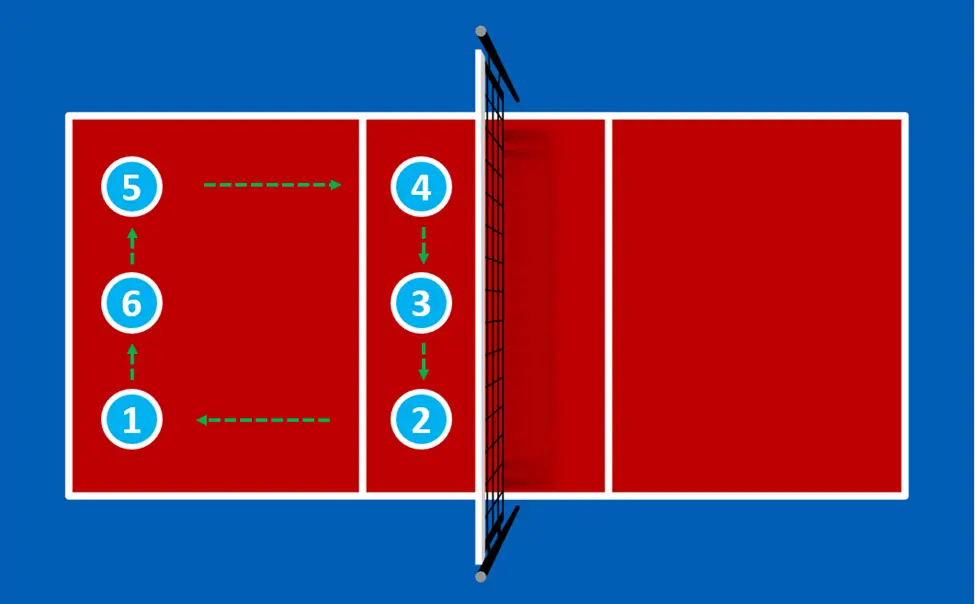
Understanding volleyball rotations is a fundamental part of improving teamwork, strategy, and ball control.
Rotations allow every player to experience both front and back rows, enabling front row players to focus on offense and defenders to enhance their passing and positioning.
Mastering these rotations can help you improve your game and ensure your team is always ready to adapt to different opponents.
Let’s explore the most common volleyball rotations……….
Here I explain some common volleyballs that are used a lot.
4-2 Rotation: Perfect for Beginners
The 4-2 rotation features four attackers and two setters, with one setter positioned in the front row and the other in the back row.
This setup emphasizes simplicity and is ideal for beginners focusing on basic skills.
- A great way to practice essential drills and team coordination.
- Front-row setter ensures smooth plays near the height of the net.
- Gives new players a chance to practice how to effectively attack the ball.
6-2 Rotation: Continuous Attacking Power
The 6-2 rotation involves six attackers and two setters, with setters playing in the back row. This setup guarantees that three attackers are always present in the front row, offering consistent offensive strength.
- Encourages strategic substitution to keep attackers fresh and effective.
- Ideal for teams with taller players who can dominate and attack the ball at the height of the net.
- Provides flexibility and helps players stay ready to adapt to different game situations.
5-1 Rotation: One Setter in Control
The 5-1 rotation features five attackers and one setter, with the setter running the offense from anywhere on the court.
This rotation is best for teams with a skilled setter capable of leading the team’s strategy.
- Enhances ball control, allowing for smoother offensive plays.
- Perfect for giving the tallest players opportunities to shine near the net.
- Promotes versatility and helps players refine their skills through focused drills.
Choosing the Right Rotation
Choosing the best rotation depends on your team’s experience and goals. The 4-2 rotation is perfect for beginners learning foundational skills.
The 6-2 rotation balances offense and defense, while the 5-1 rotation provides controlled and consistent gameplay.
Regardless of the setup, focusing on key drills, optimizing substitution, and working on ball control will help you improve and build a stronger, more cohesive team.
How to Find Your Best Position- Essential Tips
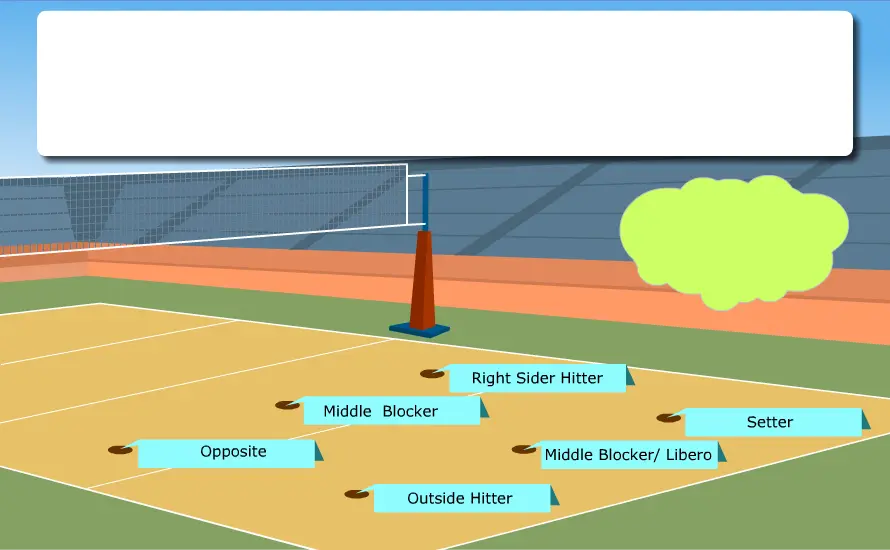
Finding your best position in volleyball is an exciting journey of self-discovery. It starts with assessing your physical and mental strengths.
Are you quick and agile, with fast reflexes? Or are you tall and strong, with a powerful spike? Understanding your natural abilities will help you determine which positions might suit you best.
When I was choosing my position (setter) I stood in front of the mirror and said to myself what I wanted to do in volleyball and I saw my fitness. After doing this some days I took my position with clarity.
Different positions in volleyball require different body types and skill sets. For example, setters need quick hands and sharp decision-making skills, while middle blockers benefit from height and jumping ability.
Liberos excel with agility and defensive skills, while outside hitters need all-around athleticism and strong attacking abilities.
Experimenting with different positions is crucial. Try playing various roles during practice to see which feels most comfortable and enjoyable.
Pay attention to feedback from coaches and teammates, as they can provide valuable insights into your strengths and areas for improvement.
Don’t be afraid to step out of your comfort zone. Sometimes, the position you least expect may be the one where you shine the most.
Embrace the process of trying new roles and learning from each experience. By doing so, you’ll find the position that not only matches your physical attributes but also aligns with your passion and playing style.
Remember, the best position for you is one where you can contribute most effectively to your team while enjoying the game.
Trust your instincts, be open to learning, and keep practicing. Your ideal position is out there, waiting for you to discover it.
Beginner Drills for Each Position
Practicing specific drills is essential for improving your skills in any volleyball position. Here are some simple drills to practice at home or with a team, focusing on fundamental skills for each position.
For setters, practice setting against a wall to improve accuracy and hand positioning. Work on quick footwork drills to get into position swiftly. Communication drills with teammates can enhance coordination and timing.
Outside hitters should focus on spiking drills, such as hitting from different angles and positions on the court.
Practicing serve-receive drills will also improve their all-around game. Jumping exercises can help increase vertical leaps and power.
Opposite hitters can benefit from blocking drills and practicing timing and positioning. Hitting drills from the right side of the court will improve offensive skills. Working on setting basics can also be useful for emergencies.
Middle blockers should focus on blocking drills, practicing their timing and footwork. Quick attack drills can help them execute fast, effective hits. Agility exercises are crucial for moving swiftly along the net.
Liberos should practice digging drills to improve their defensive skills. Serve-receive drills can enhance their accuracy and consistency. Quick reaction exercises will help improve reflexes.
Defensive specialists should work on passing and digging drills to solidify their defensive capabilities. Agility drills can improve movement and positioning on the court.
By focusing on these fundamental drills, you’ll improve your coordination, communication, and overall performance on the court.
Common Mistakes to Avoid
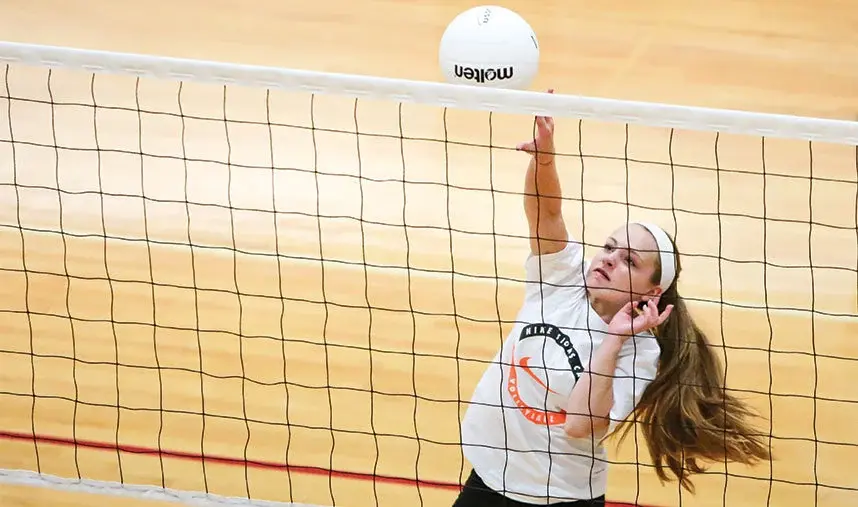
When I was new I made a lot of mistakes in my career. But I am happy with this because I learned a lot of things from making these mistakes. New volleyball players often make common
mistakes that can hinder their progress. Here I am showing some common mistakes that I have learned from my beginning career and that you have to avoid it.
Understanding these errors and learning how to correct them is key to continuous improvement.
One typical mistake is poor positioning. Players often stand too close to the net or too far back, making it difficult to react to the ball. Correct this by practicing your positioning and staying aware of your surroundings.
Another common error is inconsistent communication. Volleyball is a team sport, and a lack of communication can lead to missed opportunities and errors. Always call for the ball and communicate your intentions clearly to your teammates.
Beginners also tend to focus too much on power rather than technique. Whether hitting or serving, focusing on proper form will yield better results than simply trying to hit hard. Practice your techniques regularly to build muscle memory and improve accuracy.
Over-rotating during attacks is another mistake. This can lead to off-target hits and decreased control. Work on your approach and swing technique to maintain balance and control during your attacks.
Finally, neglecting defensive skills is a common oversight. Many new players prioritize hitting and serving but forget the importance of passing and digging. Balance your training to include defensive drills to become a well-rounded player.
By recognizing and addressing these common mistakes, you’ll set a strong foundation for continuous improvement and success in volleyball.
How Positions Work Together in a Game
Understanding how positions work together in a volleyball game is crucial for team success. Each position has unique responsibilities, but their effectiveness depends on seamless collaboration.
The setter is the team’s playmaker, coordinating attacks by delivering precise sets to hitters. Outside hitters and opposite hitters rely on these sets to execute powerful spikes.
Middle blockers provide a strong defense at the net, working with the libero and defensive specialists to block and dig opponents’ attacks.
Liberos and defensive specialists ensure the team’s defense is solid, making crucial saves and setting up offensive plays.
Serving specialists come in at key moments to deliver strategic serves that disrupt the opponent’s formation.
Effective communication is the glue that holds these interactions together. Players must constantly talk, signaling their intentions and adjusting their positions based on the flow of the game.
Watching live games or videos can help you see these dynamics in action, providing a clearer understanding of how each position contributes to the team’s overall performance.
When all positions work together harmoniously, the team operates like a well-oiled machine, making volleyball an exciting and dynamic sport to play and watch.
Have you finished your second coffee? Hahaha, it was some fun, this is the last part of this article I hope you have understood better what is the volleyball position.
Conclusion
Mastering volleyball positions is key to enjoying and excelling as a player on the court. From the setter’s strategic plays to the outside hitter’s powerful attacks and the libero’s crucial saves, every position plays a vital role in the game.
By focusing on your strengths, practicing specific drills, and understanding team dynamics, you can refine your volleyball skills and excel in the position that suits you best.
I hope this guide has provided valuable insights and practical advice to help you navigate and enjoy volleyball positions both as a player and a fan.
With dedication and practice, you’ll enhance your skills, develop as a player on the court, and truly enjoy every moment of the game.
I’d love to hear your thoughts and experiences. Share your opinions and questions in the comment box below. Happy playing.

